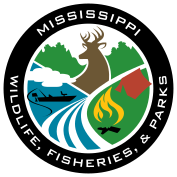
Written by: Kevin Owens
Edited by: Pierce Young
During the first few years after trees are planted many wildlife species can thrive amongst the abundance of vegetation providing food and cover while growing alongside the young trees. However, over time the beneficial plants and the structure of the plant communities for many game animals (such as deer, turkeys, and quail) will become shaded out within the understory as tree canopies converge. When the trees are more mature it is often beneficial to have them selectively cut, also known as "thinning".
Unthinned forests will eventually have a high tree density, which leads to increased competition for resources, smaller individual tree size, stress, and lower overall timber production. Unthinned forests are also more susceptible to drought and wildfires due to resource competition and increased fuel loads (accumulations of leaves, pine straw, and dead branches) and as time progresses they will experience a significant increase in tree mortality when these events occur. The amount of food and cover provided for many wildlife species is often extremely limited at this stage.
Thinning is the act of selectively removing trees in a forest stand to reduce the overall competition; allowing the trees that are left to grow larger and healthier due to increased access to sunlight, water, and nutrients found in the soil. Thinning also leads to faster tree growth rates, increased timber yield, and improved resilience to stressors such as disease, drought, and wildfires in the remaining trees. The understory vegetation in a thinned forest stand will also improve by increasing the variety of plants and increasing their growth due to better access to sunlight. This revived vegetation also becomes a valuable source of food and cover for many wildlife species. The amount of trees removed from the forest will determine if it will then be characterized as a woodland or a savannah.
Introducing prescribed fire to a thinned forest stand is important in maintaining a lively and diverse understory plant community within upland forests. It is recommended to schedule prescribed burns on rotations within the years following a thinning. Frequency and time of the year these prescribed burns should be conducted depends on vegetation responses in the understory and the overall goals a wildlife manager may have for that area. Dividing the thinned stands into individual burn units and conducting a prescribed burn on a different section each time the timber stands are ready to be burned will also allow for more diversity in the plant community across the landscape.
For more information on how to manage timber stands for wildlife visit our website at
www.mdwfp.com/wildlife-management-info
To meet with a wildlife biologist to help plan timber management for wildlife on your property visit us at